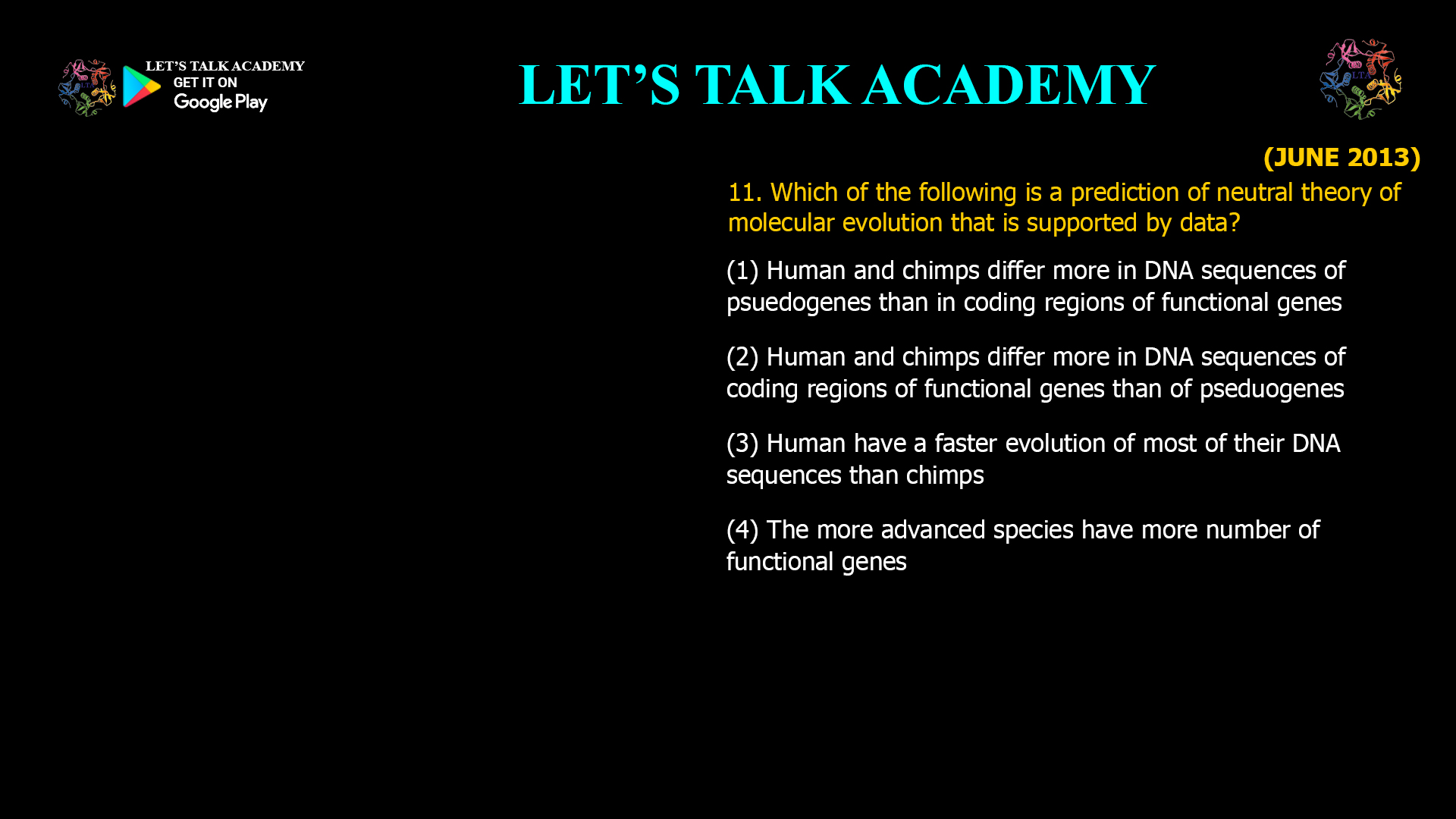- Which of the following is a prediction of neutral theory of molecular evolution that is supported by data?
(1) Human and chimps differ more in DNA sequences of psuedogenes than in coding regions of functional genes
(2) Human and chimps differ more in DNA sequences of coding regions of functional genes than of pseduogenes
(3) Human have a faster evolution of most of their DNA sequences than chimps
(4) The more advanced species have more number of functional genesNeutral Theory Prediction: Why Human and Chimp Pseudogenes Differ More Than Coding Genes
The neutral theory of molecular evolution, proposed by Motoo Kimura, has reshaped our understanding of genetic change. It posits that most evolutionary changes at the molecular level are not driven by natural selection, but by the random fixation of neutral mutations. This insight is especially powerful when comparing the genomes of closely related species, such as humans and chimpanzees.
What Does the Neutral Theory Predict?
According to the neutral theory, most mutations in functional (coding) regions are either neutral or deleterious. Deleterious mutations are quickly removed by purifying selection, while neutral mutations can accumulate over time by genetic drift. In contrast, pseudogenes—which are nonfunctional copies of genes—are not subject to purifying selection. As a result, mutations in pseudogenes accumulate freely, leading to higher sequence divergence between species in these regions compared to functional genes24.
Evidence Supporting the Prediction
Empirical studies have confirmed that:
-
Coding regions of functional genes are highly conserved between humans and chimps, as most changes would affect protein function and are removed by selection.
-
Pseudogenes show much greater sequence divergence because mutations here are not weeded out by selection and thus accumulate at a neutral rate247.
This pattern is a hallmark prediction of the neutral theory and is routinely observed in comparative genomics.
The Correct Prediction
Given the options, the prediction of the neutral theory of molecular evolution that is supported by data is:
(1) Human and chimps differ more in DNA sequences of pseudogenes than in coding regions of functional genes
This is because pseudogenes, lacking functional constraints, evolve faster at the molecular level than coding sequences, which are under strong selective pressure to maintain their function24.
Why the Other Options Are Incorrect
-
Option 2: Coding regions are more conserved, not more divergent, between humans and chimps.
-
Option 3: There is no evidence that humans have a faster overall rate of DNA sequence evolution than chimps; rates are generally similar.
-
Option 4: The number of functional genes is not simply a function of how “advanced” a species is, and this is not a prediction of the neutral theory.
Conclusion
The neutral theory accurately predicts that pseudogenes will show greater sequence divergence between species than coding regions of functional genes. This has been confirmed by numerous studies comparing human and chimpanzee genomes, demonstrating the power and relevance of the neutral theory in molecular evolution247.
Correct answer:
(1) Human and chimps differ more in DNA sequences of pseudogenes than in coding regions of functional genes -



